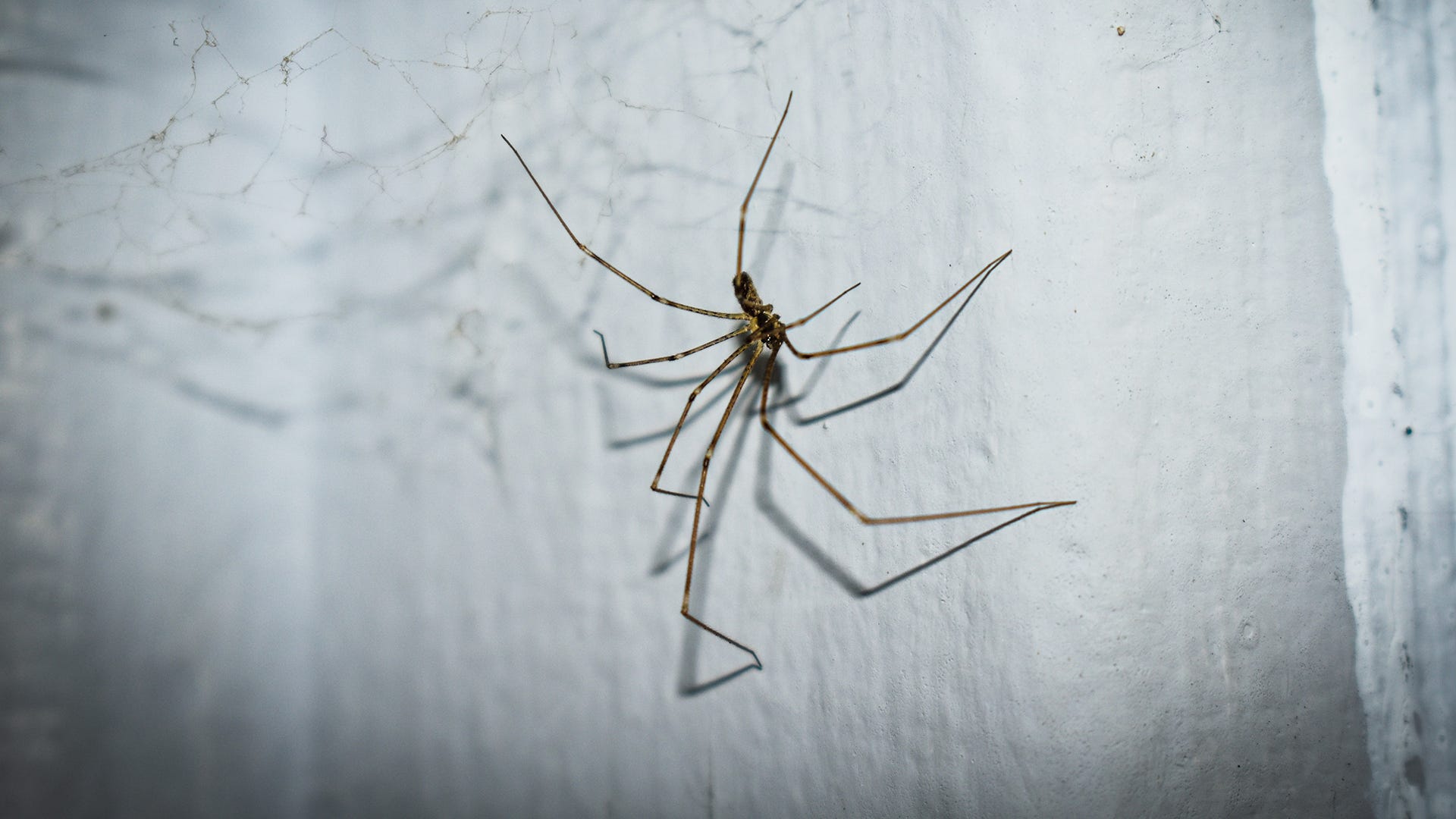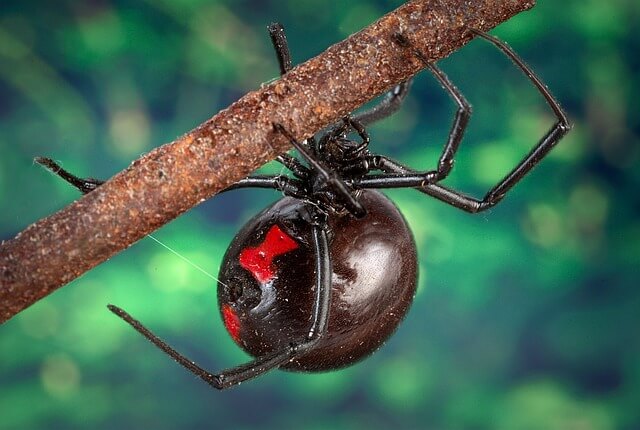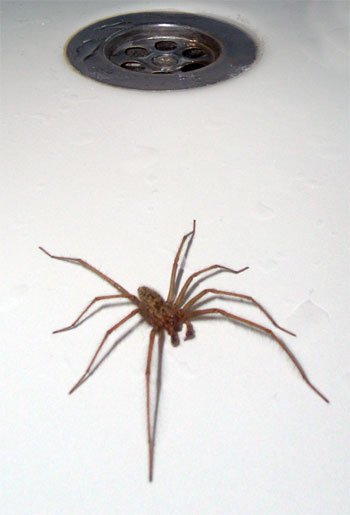Spiders often seem to appear out of nowhere due to their stealthy movement and ability to hide. Their small size allows them to sneak through tiny openings.
Spiders are a common sight in many homes and gardens, causing surprise and sometimes alarm with their sudden appearance. These arachnids are incredibly adept at finding the smallest gaps to enter indoor spaces in search of warmth or prey. Their presence, while startling, is usually harmless and can even be beneficial by controlling pests.
Understanding the reasons behind their seemingly sudden appearance involves recognizing their natural behaviors and habitats. Spiders are masters of concealment, using their environment to stay out of sight until they need to venture out. Whether it’s for mating, hunting, or seeking shelter, these creatures have adapted to coexist quietly alongside humans, often unnoticed until they make their unexpected appearance in our living spaces.

Credit: www.terro.com
The Mysterious Appearance Of Spiders
Spiders seem to pop up out of nowhere, don’t they? This sudden appearance often leaves us puzzled. It’s as if they have a secret portal to our world. Yet, there’s more to these eight-legged creatures than meets the eye. Let’s unravel this mystery.
Sudden Sightings: More Common Than You Think
You’re not alone in noticing spiders suddenly. These critters are experts at staying hidden. They sneak into homes, seeking shelter and food. Spiders are everywhere, even if unseen.
- They hide in cracks and crevices.
- Spiders love quiet, undisturbed spots.
- They come out to hunt at night.
Natural Habitats In Human Spaces
Your home offers ideal spider habitats. They find corners and furniture perfect for webs. Houseplants, basements, and attics attract spiders too.
| Location | Why Spiders Love It |
|---|---|
| Under furniture | Dark and quiet |
| Around windows | Easy access to prey |
| Houseplants | Natural environment |
Lifecycle And Behavior Patterns
Understanding why spiders seem to appear out of nowhere starts with their lifecycle and behavior patterns. Spiders have fascinating lives. From their first moment as an egg to their adult stage, spiders go through many changes. Their visibility changes with the seasons too. Let’s explore these stages.
From Egg To Arachnid: Spider Development
Spiders start their life in an egg. A mother spider can lay hundreds of eggs. These eggs are in a silk sac. The sac protects them. After a few weeks, tiny spiders, called spiderlings, hatch. These spiderlings look like small adults. They are very independent. Soon after hatching, they start their journey. They leave their sac and look for food. This journey is their first big adventure.
Seasonal Activity: When Spiders Are Most Visible
Spiders are more visible in certain seasons. This is due to their search for mates and changes in temperature. Spring and fall are important times. During these times, adult spiders look for partners. They may enter homes. They are not coming to scare you. They are looking for love. In summer, young spiders grow. They are busy eating and staying hidden. When winter comes, many spiders slow down. Some even die. Yet, some find warm spots to stay alive.
- Spring: Mating season begins. Spiders are very active.
- Summer: Young spiders grow. They eat a lot.
- Fall: Adults search for mates. Many enter homes.
- Winter: Spiders slow down. Some find warm spots.
The Search For Resources
Ever wonder why spiders appear from thin air? They seek vital resources. Let’s explore their motives.
In Pursuit Of Prey: Spiders On The Hunt
Spiders need food to survive. Their sudden appearance often links to hunting. They’re after insects mostly. In homes, they find abundant prey. This includes flies, mosquitoes, and moths. Web-weaving species craft traps. Others, like wolf spiders, chase down meals. Spiders sense vibrations and pounce on unaware victims. Their presence suggests a rich hunting ground nearby.
The Quest For Mates: Reproductive Motivations
Spiders also surface seeking partners. Mating drives them to roam. Mature males wander more than females. They search for receptive mates to ensure offspring. During mating seasons, sightings spike. This is when spiders are most mobile. Encounters peak as they venture into new territories. They use pheromones and vibrations to communicate. Mating rituals may lead them into open spaces.
- Food and mating drive spiders into view.
- Homes offer prey and potential partners.
- Mating season increases spider visibility.
Environmental Triggers
Ever wonder why spiders seem to appear out of thin air? Environmental triggers play a key role in this sudden emergence. Spiders, like many creatures, are sensitive to changes in their surroundings. These changes prompt them to move, often leading them to our homes.
Weather Fluctuations And Spider Emergence
Spiders seek comfort, just like us. Weather changes greatly affect their behavior. When it’s too hot, cold, wet, or dry outside, spiders search for better conditions. This often leads them indoors. Let’s explore how different weather patterns impact spider activity:
- Heat waves: Spiders escape the scorching sun.
- Cold snaps: They seek warmth to survive.
- Heavy rains: Spiders flee from floods.
- Dry spells: They hunt for humidity.
Disturbances In Their Habitat: Human Impact
Our actions disrupt spider habitats. Construction, gardening, and cleaning stir spiders into action. They must find new homes. This table shows common disturbances that affect spiders:
| Disturbance Type | Spider Reaction |
|---|---|
| Gardening | Displaced spiders seek shelter. |
| Cleaning | Spiders move to avoid danger. |
| Renovation | They scatter to find peace. |
The Role Of Survival Instincts
The Role of Survival Instincts in spiders is fascinating. These instincts help spiders stay alive. They guide spiders in avoiding danger. Survival instincts make spiders seem to appear out of nowhere.
Escape Responses: Spiders And Perceived Threats
Spiders have amazing escape skills. They sense danger fast. When they feel threatened, spiders quickly find a safe place. This quick move can make them seem to pop up suddenly.
- Vibrations: Spiders feel these as warning signs.
- Fast Movements: They escape quickly to avoid harm.
- Hiding: Spiders hide in small spaces for safety.
Adaptive Camouflage And Surprise Encounters
Spiders are masters of disguise. Their colors and shapes help them blend in. This skill is called adaptive camouflage. It makes them hard to see until they move.
| Camouflage Type | Description |
|---|---|
| Color Matching | Spiders change color to match their surroundings. |
| Shape Mimicking | They can look like leaves, twigs, or even bird poop. |
These survival tactics lead to surprise encounters. We might not see a spider until it moves. This sudden appearance is all about staying safe and unseen.

Credit: www.terro.com
Home Infestations Explained
Spiders often seem to appear out of thin air in our homes. This sudden presence can be alarming. Understanding how spiders invade can help us prevent them.
Common Entry Points For Spiders
Spiders slip into homes unnoticed. They find tiny gaps to enter through. Here are places they commonly use:
- Windows: Cracks or poorly fitted screens
- Doors: Gaps under doors or around frames
- Vents: Uncovered or damaged vents
- Plumbing: Holes for pipes and fixtures
- Foundations: Cracks in walls or floors
Preventing And Managing Spider Populations Indoors
To keep spiders out, we must make our homes less inviting. Follow these steps:
- Seal Entrances: Fix cracks and gaps.
- Remove Webs: Clean regularly to disturb spiders.
- Control Insects: Reduce spider food sources.
- Reduce Clutter: Limit spider hiding spots.
- Use Natural Deterrents: Peppermint oil can repel spiders.
For larger infestations, consider professional help. Pest control experts can offer more comprehensive solutions.
Debunking Spider Myths
Spiders often spark fear and curiosity. They seem to appear out of thin air. Many believe myths about these eight-legged creatures. Let’s uncover the truths behind common spider misconceptions.
Misconceptions About Spider Behavior
Spiders invade homes for warmth during cold months. This is a common belief. In reality, spiders enter for various reasons. Seeking prey, moisture, or accidentally wandering in are more likely causes.
- Spiders prefer outdoors
- Indoor migration is often accidental
- House spiders are usually permanent residents
Another myth is that spiders chase humans. Spiders have no interest in humans. They may move towards you if confused, but they are not aggressive.
The Truth About ‘deadly’ Spiders
Many fear spiders due to their ‘deadly’ reputation. In truth, few species pose a risk to humans. Most spiders have venom too weak to harm us.
- Black widows are shy
- Brown recluses avoid confrontation
- Spider bites are rarely fatal
Spider bites leading to death are extremely rare. Deaths from spider bites are often due to allergic reactions, not the venom itself.
Understanding spiders better helps reduce fear. They play crucial roles in ecosystems. Most importantly, they control pests.
Remember, spiders are not out to get you. They simply exist alongside us, often unnoticed.

Credit: senske.com
Conservation And Coexistence
Conservation and Coexistence are key when we talk about spiders. These creatures often startle us by appearing suddenly. Yet, they play a vital role in nature. Let’s explore their importance and how we can live together peacefully.
Understanding The Ecological Importance Of Spiders
Spiders are essential for a healthy environment. They control pests by eating insects. This helps maintain ecological balance. Spiders also serve as food for other animals. Their silk is incredibly strong and useful. Their presence indicates a healthy ecosystem.
- Pest control: Spiders consume large amounts of insects.
- Food for wildlife: Many species depend on spiders for nutrition.
- Silk production: Spider silk has multiple ecological and human uses.
- Ecosystem health: Spiders are bioindicators of a thriving environment.
Fostering A Harmonious Relationship With Spiders
Respecting spiders is crucial for coexistence. We can create spaces where spiders thrive without disturbing us. Simple steps can make our homes less attractive to spiders. This helps us live without fear while respecting their role in nature.
| Strategy | Benefits |
|---|---|
| Keep clean | Reduces insects, less food for spiders. |
| Seal cracks | Prevents spiders from entering homes. |
| Use light wisely | Attracts fewer insects, so fewer spiders. |
| Respect habitats | Allows spiders to control pests naturally. |
By understanding spiders, we respect their role and create harmony. This makes our spaces safer and supports nature. Let’s embrace conservation and coexistence with spiders.
Frequently Asked Questions
Why Do Spiders Suddenly Appear Indoors?
Spiders often come indoors seeking shelter, food, or a mate. Changes in weather, like a drop in temperature, can also drive them to seek refuge in your home. They typically enter through cracks, open windows, or doors.
What Attracts Spiders To Your Home?
Spiders are attracted to homes that offer plenty of hiding spots and food sources. Clutter, insects, and warm, dark corners can make your home an ideal habitat for spiders to thrive.
How Can You Prevent Spiders From Entering?
Sealing cracks, installing screens on windows and doors, and keeping your home clean can reduce the number of spiders entering. Regularly removing webs and using spider repellents also helps in prevention.
Do Spiders Come Out More At Certain Times?
Spiders are more visible during mating season when they’re searching for partners. They also tend to appear more as the weather changes, particularly in the fall when they seek a warm place for the winter.
Conclusion
Understanding the habits of spiders demystifies their sudden appearances. By recognizing the factors that draw them indoors, we can better manage our spaces to deter unwanted guests. Remember, spiders often seek shelter and food—two things our homes readily provide. Keeping areas clean and clutter-free is the key to seeing fewer eight-legged surprises.
Let’s embrace our role in the spider’s world, ensuring coexistence rather than unexpected encounters.
Related posts:

I’m MD Tanvir, and I bring years of expertise gained from working closely with pest control companies to the forefront. My journey in the industry has inspired me to launch Bug Battler, a platform aimed at equipping people with the know-how to combat pests autonomously. Through Bug Battler, I aim to empower individuals with practical insights to tackle pest infestations effectively.

